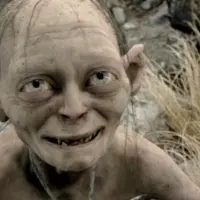Something a little different but perhaps appropriate for the season, coming on the heels of Hallowe’en and at the beginning of November, known to Anglo-Saxons as Blotmonath or ‘the month of blood’ – a post about Hell! In religion and folklore, Hell is an afterlife location in which evil souls are subjected to punitive suffering, often torture as eternal punishment after death. The modern English word hell is derived from Old English hel, helle (first attested around 725 AD to refer to a nether world of the dead) reaching into the Anglo-Saxon pagan period. Hell appears in several mythologies and religions. It is commonly inhabited by demons and the souls of dead people. A fable about Hell which recurs in folklore across several cultures is the allegory of the long spoons. Hell is often depicted in art and literature, perhaps most famously in Dante’s Divine Comedy. Other religions, which do not conceive of the afterlife as a place of punishment or reward, merely describe an abode of the dead, the grave, a neutral place that is located under the surface of Earth (for example, see Kur, Hades, and Sheol). Such places are sometimes equated with the English word ‘hell’, though a more correct translation would be ‘underworld’ or ‘world of the dead’. From illustrations in The Far Side comics and TV’s South Park, to centuries-old works like Paradise Lost and Dante’s Inferno, humanity has always wanted answers about hell. Lots of people have theories, some based in fact and some based on fiction.
To the nascent Christian church, hell in fact barely existed. All they knew from the Hebrew scriptures was Sheol, which literally means “grave” and was believed to be the dusty deep place within the earth itself to which every soul traveled after death, accompanying its body. There were rumblings and speculations of an afterlife in the century of Christ, Philo, and Paul, but these came mostly from what was then pop culture: Greek and Roman mythology. The rumblings blossomed briefly and opaquely in the Gospels, and then at various points throughout late antiquity and the Middle Ages, including in the revelations to the Prophet Muhammad recorded in the Qur’an and again in the writings of the greatest theologian, Thomas Aquinas. It was the Italian poet Dante Alighieri who changed everything with his famous Inferno, which he began writing in about 1306 CE. But to read the Inferno today is to realize how little it has to do with the Bible. There is more Greek and Roman mythology ― adapted by Dante from classics such as Hesiod’s Theogony, Virgil’s Aeneid, and Ovid’s Metamorphoses ― than there is scripture in Dante’s nine circles of hell. Where Augustine had criticized writers like Virgil and Ovid, saying that Christians shouldn’t read them, the pagan poet Virgil serves as Dante’s expert tour guide through the upside-down cathedral of the Inferno. Using a bunch of philosophies and myths, we have Dante to thank for making eternal punishment exotic, real, and… Christian.
Dante’s hell has influenced our thinking in ways we rarely notice. “All hope abandon, ye who enter in,” is scrawled above the door to hell by Dante, and the sentence has subsequently been adopted by many a Goth website, heavy-metal band, T-shirt, video game, and even a few novelists. One popular Finnish band recorded an album a few years ago called Venus Doom, in which its nine songs are intended to represent each of the nine circles of hell. From the lyrics, the band, called HIM, clearly wants to embrace and celebrate what feels like their inevitable damnation. The track “Bleed Well” perhaps says it all, even though it’s an acoustic number. Even Rick Riordan’s gigantic best-selling Heroes of Olympus series of novels for elementary school kids has recently added The House of Hades as book four. Now, children everywhere are coming home from school talking with their parents about the river Styx, Tartarus, Mars, and Aphrodite in the same way that most of us used to come home and tell our parents about (depending on which side of the pond you come from) what happened on Rainbow or Sesame Street!
















Reblogged this on The Wizard's Sword and commented:
Mythologies and fables are the source for many books and movies.